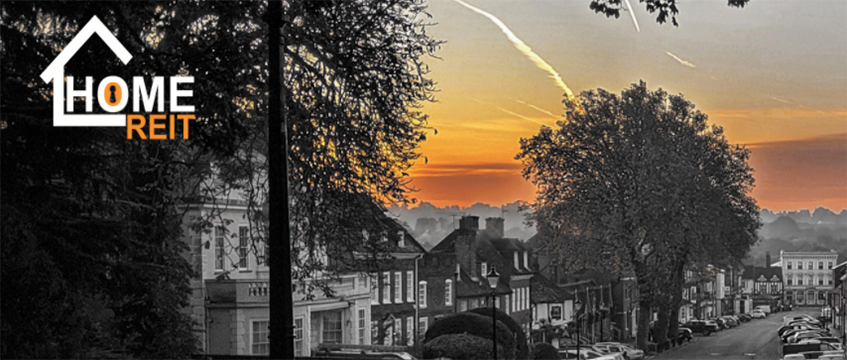MIPIM 2017: Developers will find value if they emphasise delivering more than just “vanilla” buildings with a view to attracting institutional investment.
Attention to detail, an obsession with customer satisfaction, and emphasis on creating an experience rather than just a building are attributes that will ultimately provide enhanced capital value to a scheme, according to Todd Lundgren, UK and Europe regional director for CallisonRTKL.
Speaking a panel in the Manchester stand at MIPIM, Lundgren said that developers often failed to demonstrate a broader vision, especially in housing, where the pressure to increase supply is the primary consideration. He criticised the market for being too “engineering driven’’.
“Quality needs to be part of the conversation to capture community,” he said. However, he added that community-focused developments could also be relatively simple ones.
“Good places have a mix of uses, a scale of spaces, height and density, but within the traditional urban forms that people understand. If you go too crazy, people won’t be comfortable”
Ken Knott, chief development officer of Select property group, said in the panel discussion that the primary goal for development should be the customer experience. The operation of building is as important as the delivery of it, he said.
In the company’s Vita student housing brand, staff with retail and hotel backgrounds have been employed to run operations, with measureable results to show for it.
“They work hard to make each student feel at home,” said Knott. “The booking rate for our student accommodation is 60% higher than the average because of our obsession over the customer.”
The industry has lost its way since the 1960s with regard to placemaking, said Knott, adding: “We used to be better at it.”
However, he said that Manchester’s city centre, which has evolved into a series of interesting places, has hit the mark, with yield contraction now sweeping across the city.
“It is without a doubt the second-best investment destination in the UK after London and that’s down to creating places and communities,” said Knott.
Lynda Shillaw, divisional chief executive of MAG Property, highlighted the concept of a building as a brand.
“It is increasingly representative of what you stand for. Buildings say something about how you feel about the people who work in them. You can create a place that lifts aspiration.”
“The value is not just in the bricks and mortar. It is in jobs and opportunities, permeability, the impact a scheme can have on jobs and health and well being, as well as the economic prospects of everything around it.”
Lynda Shillaw, divisional chief executive, MAG Property
“We’ve got deals screaming down the pipeline” offers a convivial Lynda Shillaw, divisional chief executive of Manchester Airports Group.
Pressed for more detail, she lets out a huge laugh. “Well, I don’t think people will be surprised that the first deals are likely to be hotels because we’ve had a record 26m passengers through Manchester in the past 12 months and that puts immense pressure on our hotel stock. As a result, we’re getting interest from all the major operators.”
MAG Property operates 5m sq ft of space and is pouring £1bn of investment into its property holdings around Manchester airport – the company also has holdings at London Standsted, East Midlands and Bournemouth airports – so it can adapt to the airport’s rapid growth.
Shillaw heads a company that already manages £640m of real estate assets in Manchester, accommodating a “very large and lively community”.
Key to the scheme Manchester airport scheme progressing has been a £15m road investment to the north of the site, developed largely by the Beijing Engineering and Construction Group, which is a 26% joint venture and construction partner, alongside Carillion, the Greater Manchester Pension Fund and Argent. The project has helped the company grow from five people to 60 and invest further in Manchester.
It has also spurred visits from countless Chinese delegations, including president Xi Jinping in 2015. This influx, according to Shillaw, “has put Manchester, Manchester airport and Manchester city very firmly on the map”.
Comment: Todd Lundgren, UK and Europe regional director, CallisonRTKL
“Too often, development in the UK is rooted in isolated thinking. The resulting “islands of growth” might tick the right boxes, but they also produce problems down the road by functioning independently of their context and depriving local areas of the social and economic value of well-integrated development. What we need to create sustainable and flexible places today is broad thinking and a deep understanding of what makes a thriving community. To this end, urban designers and architects have a vital role to play as visionary friends to developers and local councils.
“The need for this sort of urban design guidance is no more evident than in housing discussions. Again and again, we hear solely of the quantum of housing needed, as if the number of homes delivered is the only metric by which we should measure success in addressing the housing shortage. In fact, providing good-quality housing is about far more than a formula of land availability, housing standards, procurement and delivery; it’s about providing places for people to live well. As designers, we can ensure that housing doesn’t just deliver units, but also addresses the broader issues faced by communities. Done right, residential development can help combat antisocial behaviour, obesity, and energy waste, while promoting the vital benefits of social inclusion, connectivity and a sense of pride.
“As urban designers and architects, we are in the unique position of knowing the key ingredients – from appropriate density to desirable block size – that bridge the gaps between development and community. It’s our job to show that financial returns for developers can co-exist with or even be enhanced by the economic, social, and environmental value that comes from effective integration. We must reveal how links to public realm and high streets can reinforce social identity, foster integration, and encourage pedestrian movement. We must demonstrate how scale, a mix of uses and a blend of familiar urban forms can create a welcoming environment for a range of people and activities.
“Recently, at CallisonRTKL, we designed an 1,100-unit development in Calgary, Canada, that invites social interaction between different demographics through intelligently considered public realm and community services. In Reading, we designed a 315-unit apartment building that has important links to local green spaces, and pedestrian, cycle and transport infrastructure. And in Manchester, we worked with Deloitte, Planit-IE and Manchester City Council to deliver residential quality guidance that ensures housing is as productive and meaningful to people outside its walls as it is within them. In every example, we worked alongside developers and councils to provide shared vision, broad thinking and genuine partnership – all vital components to creating tomorrow’s enduring communities.”
To send feedback, e-mail Rebecca.Kent@egi.co.uk or tweet @Writer_RKent or @estatesgazette











